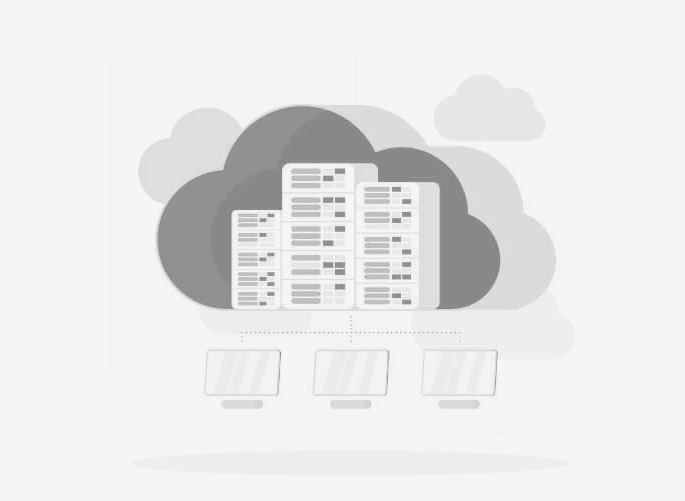MODIFIED ON: August 7, 2024 / ALIGNMINDS TECHNOLOGIES / 0 COMMENTS

Cloud migration services are becoming popular day by day. As more businesses are optioning for cloud technologies, the industry has seen a sudden growth in recent times. The surge in demand for infrastructure-as-a-service (IaaS) and platform-as-a-service (PaaS) is an example of this.

According to Gartner, worldwide end-user spending on public cloud services is forecast to grow 23.1% in 2021 to total $332.3 billion, up from $270 billion in 2020. Flexera 2021 State of the Cloud Report states that enterprises are continuing to spend on the cloud and most of the respondents are leveraging multi-cloud and hybrid cloud strategies.
Cloud migration: The driving force
The COVID pandemic has had a significant impact on the pace of cloud adoption. However, the trend was much noticeable even before the pandemic. Organizations that recognized the benefits of cloud technologies were the first to move from traditional environments to cloud ones. In other words, the benefits that are offered by the cloud environments are the driving force behind this trend. The pandemic has just fastened its pace.
Why migrate to the cloud?
The main advantage of the cloud is that it offers growth and scalability. Since these two are the major goals of any business, most of them saw the emergence of cloud technologies as an opportunity to turn their ambitions into realities.
The major benefits of cloud include,
Cost
Setting up and maintaining technology infrastructure will drive up the total cost of ownership. You must spend on purchasing the components, hiring experts to set up the system, place proper authorizations and security measures, enable hardware and software compatibility, and update the system as technology and industry advances. It is your responsibility to train your staff or hire an external team to periodically evaluate the strength and weaknesses of the system, make it up to date and running. These are the major drawbacks of any legacy systems.
However, ever since companies like Amazon and Microsoft started offering cloud services to thousands of customers, companies could opt for infrastructure as services and pay only for the usage. Since the cost is divided among a large customer base, the price of the services has become affordable.

Resources
To set up, run and maintain legacy systems, businesses have to invest on human resources. The systems are maintained by dedicated staff who need to have adequate knowledge on how the system works and how to make it compatible and future-proof.
However, when a business is optioning for infrastructure-as-a-service (IaaS) and platform-as-a-service (PaaS), they are also getting expert support as part of the service. The service provider will take care of staffing, training, maintenance and updating of the system. So, the businesses can fully focus on their core functions.
Security
The security of data was a big headache for businesses. Even now, it remains a major concern for them and their end-users. The introduction of cloud systems couldn’t change it. However, ever since businesses have started adopting IaaS, businesses could worry less and spend less on this area as the infrastructure providers also offer security as a part of the overall package.
During the time of legacy systems, businesses must allocate a portion of their profit to security and threat prevention. They are also compelled to periodically evaluate whether their infrastructure has any vulnerabilities, and it can withstand the latest threats. Many small businesses find it difficult to allocate funds since the profit they are gaining is already marginal.
However, the introduction of cloud as services brought new concepts like the “shared responsibility model” to the industry. The services provider, for example AWS, will be responsible for the hardware, network and other facilities needed to run the systems and you will be responsible for encrypting the data and authorization.
The benefit is that businesses no longer have to invest in research and development and maintenance of the infrastructure. The responsibility and cost of the same will fall on the service providers. Since their whole business model depends on the quality and security of what they offer, it is more likely that they will invest in these areas, and they are more than capable to do so compared to businesses depending on legacy systems.

Accessibility and Authorization
Legacy systems are more vulnerable to data theft and similar threats as the data are stored in local premises. Anyone who has access to such premises may have access to the stored data whether it is in raw form or encrypted form. So, companies had to take extra precautions to ensure data security when it comes to legacy systems.
On the other hand, data are stored safely and remotely in a cloud system. Often the services providers demand that the data should be converted into encrypted form to avoid any data leakage. They also offer several features to enable multi-level authorization where not everyone can access the whole data and often systems are in place to track who is accessing what.
Collaboration
Cloud enables several people from different locations of the world to work on a platform at the same time. This not only increases productivity and communications but also enables companies to hire from across the globe. Sometimes it is difficult to find the right talents locally or the cost of hiring locally may be higher. Using cloud technologies, businesses now have a way to overcome these challenges.
Speed
As cloud platforms leverage the advantages of latest technologies, they are often fast and more responsive compared to legacy systems. Also, cloud service providers have a good portion of their budget allocated to research and development of the platform to increase speed, compatibility, and uptime.

Should you migrate to the cloud?
For most businesses, migrating to the cloud will bring at least one or more benefits mentioned above. However, cloud migration has its own challenges. Often the process is considered troublesome and demands support from experts. Sometimes, the existing system may not be supported on the cloud and a new solution have to be developed from scratch.
Legacy application migration: Challenges
To understand the challenges of legacy application migration to cloud, we first must understand what a legacy system is.
Legacy systems
Legacy systems are self-managed applications deployed within a company’s on-premises. Typically, the pieces of equipment and facilities are owned by the company and the system is maintained by the company staff. This type of system requires huge cost to set up and run as the companies must invest in space, equipment, licenses, post-purchase services, hiring and training staff, maintenance and replacement, security and periodic evaluation etc.
What are the problems with legacy systems?
Legacy systems are sometimes considered as a hindrance to growth as businesses must find capital to invest in the infrastructure to enable scaling. Without uninterrupted cash flow, it will be difficult to invest in infrastructure and resources at each stage of growth. It becomes more challenging when the growth is sudden, or the business is not confined to one market.
How do you deal with legacy systems?
When it comes to dealing with legacy systems, there are mainly two ways.
- You can maintain the legacy system
- Or modernize the legacy applications
Maintaining legacy systems
Businesses choose to maintain legacy application to avoid cost involved with modernizing their applications. Be it maintaining, adding additional features, or replacing the existing applications with new one, it all demand additional investment in terms of money, resources, and time. However, most businesses consider maintaining the existing systems cost less money as compared to replacing it. So instead of investing on new technologies and methodologies, they will allocate a portion of total budget to maintain the existing system.
However, maintaining legacy applications become problematic for most business in long run. They must ensure frequent cashflow for maintenance, hire and train expertise to maintain the systems, replace outdated or failed components with new ones, and the uptime may go down causing a dissatisfaction among the end users. Maintaining legacy applications become more challenging when the industry is too narrow, where finding the expertise and replacing components are difficult and costly. When the applications are not modernized for so long, compatibility issues may arise, and it may force the business to replace the entire systems causing heavy investments.

How do you modernize a legacy application?
Through containerizing, rehosting or re-platforming businesses can maintain a legacy system. Amazon states that GE Oil & Gas reduced their TCO (total cost of ownership) by 52% by rehosting hundreds of applications to the cloud as part of a major digital overhaul.
With the help of containerization, businesses can improve the efficiency and portability of their legacy applications. It involves encapsulating software code and all its dependencies in order to make it suitable to run on any infrastructure. In simple terms, containerization helps applications to be “written once and run anywhere.”
Other ways of modernizing legacy applications include
Rehosting
Rehosting is moving the applications components to physical, virtual or cloud infrastructure without modifying the functions, features or structure of the applications.
Re-platforming
Migrating the entire system to a new platform to make the system compatible and futureproof. The system may undergo small modifications to make it fit for the new platform. However, the basic functions and features stay the same.
Restructure
Change the code of the applications and make it optimized for the current time. It is mainly done to make the applications more compatible, remove outdated methodologies from the code and incorporate efficient coding methods to the system.
Rearchitect
Change the entire architecture of the applications. It is mainly done to improve the capabilities of the application or make is compatible with a new platform. Sometimes it become costly as restructuring the entire code may also be involved in the process.
Rebuild
Rebuild specific functions of the application from scratch or rebuild the entire applications. The challenge is the process requires right planning and more investment.
Replace
Replace the legacy applications with modern systems. For example, the number of businesses moving from legacy applications to cloud based modern ERP solutions are increasing.
When it comes to modernizing legacy applications, the best way is to evaluate your situation and choose the path that is more efficiency, affordable and future-proof.
What is legacy cloud migration?
For most businesses cloud migration of legacy systems is the efficient and cost friendly way to modernize their systems.
In simple terms, cloud migration of legacy applications is a process of moving existing applications and its components from a on-premises infrastructure to a cloud based one. With the help of cloud migrations, the businesses will gain benefits like better scalability, security, efficiency, speed, team collaboration, less upkeeping cost and better end user satisfaction. As the legacy application is not replaced but only moved to a new platform, the functions and features of the systems remains almost the same.
However, businesses will also have an option to add additional features to the system as the new cloud platform will be more compatible with latest technologies. Since we are not replacing the entire system, the overall cost of modernizing legacy application is less compared to replacing it with a new one or rebuilding it entirely. It is also beneficial than maintaining the legacy application as the compatibility, uptime, and the cost of upkeeping of legacy systems will be on a downward trend each day.

How are applications migrated to the cloud?
Often, application migration to cloud is implemented in a systematic way.
Process of moving legacy applications to the cloud
Evaluation
The first step is to evaluate why you must migrate legacy applications to cloud. Often though it is adopted as a part of an organization’s long term digital strategy. As strategies are solutions to problems that may arise in the future, an organization will evaluate its current state and future trends in the industry periodically. The main objective of this evaluation involved doing a SWOT analysis of their existing systems and whether they can meet the businesses long term ambitions. Most businesses find legacy applications as a hindrance in long term as scaling and growth will be slowed down due to the characteristics associated with legacy systems and the cost involved with maintaining and upgrading such systems is also high.
Planning
Planning mostly involves identifying the systems that to be migrated, how much resources can be allocated for the process and when it can be implemented. The objective of the planning is to reduce the overall cost of migration by either migrating only the necessary components of a system or do it in a way as the resources needed for the process is bare minimum. This step also involves the process of deciding the right time to implement the migration to avoid any negative impact on the ongoing businesses functions. During this step you may also list down the objectives of cloud migration and what are the things you as a business trying to achieve from the process. The success of cloud migration will depend on whether you are able to meet these objectives and a reevaluation will be necessary at the end of the process.
Choosing the right cloud environment
Each cloud environment will have its own strength and weaknesses. You must evaluate each opportunity and identify which one is best suitable for your businesses case. Here the objective you set in the previous step become handy. The strength of a cloud environment can be anything like its price, unique development opportunities, uptime, customer support, compatibility features, futureproof or even marketing potentials.
More focus should be given to businesses core values and its long-term goals like end user satisfaction rather than short term objective like keeping the budget of the process under control. You may need the help of an expert to choose the right environment and to avoid making any mistakes. Please keep in mind, choosing the wrong environment will force you to spend more in future.
Choosing the right tool and expertise
There are numerous data migration tools available in the market. Since you are migrating an existing system, there will be data that is already stored in the system that have to be migrated safely and securely.
Just like different cloud environment, each these data migration tool has its own functions, strength, and weaknesses. So, a single tool cannot be used in all business cases. You must choose the one that is compatible with your existing infrastructure and the cloud environment you are planning to migrate to. Different data migration tool has different pricing. However, you should choose one considering factors like data loss prevention, efficiency, safety and compatibility, and security.

Reevaluation
As a final step, you as a business must evaluate whether moving to cloud has helped you to achieve the things you are intended. You must consider whether the new environment is helping you to overcome the weaknesses of the old system and how efficient it is in helping you achieve your businesses goals. You can also compare the results of the whole process with the list of benefits you had curated on step 2 (Planning). Only if the result of revaluation is positive, we can say that moving of legacy application to cloud was a successful endeavor for your business.
Conclusion
Moving legacy applications to the cloud offers several benefits that are crucial to you as a business. However, the migration must be planned and implemented carefully which may requires the help of a cloud migration expert. AlignMinds has more than 12 years of experience in working with legacy applications, cloud environments and cloud migration. If you are looking for a technology partner to plan and implement the entire process for you, feel free to contact us.
Leave a reply
Your email address will not be published.
-
Recent Posts
- The Role of AI in Business Growth: Top Trends for 2025 and Beyond
- The Evolution of Voice Search in AI: What’s Next for 2025?
- How to Hire an AI Developer: A Complete Guide 2025
- Top 10 Android App Development Trends in 2025
- Top Trends in Product Modernization for 2025 and Beyond
-
Categories
- MVP Development (5)
- AlignMinds (56)
- Operating Systems (1)
- Android POS (3)
- Application Hosting (1)
- Artificial Intelligence (49)
- Big Data (2)
- Blockchain (1)
- Cloud Application Development (8)
- Software Development (39)
- Software Testing (9)
- Strategy & User Experience Design (4)
- Web Application Development (28)
- Cyber Security (6)
- Outsourcing (7)
- Programming Languages (3)
- DevOps (5)
- Software Designing (6)
- How to Code (4)
- Internet of Things (1)
- Machine Learning (2)
- Mobile App Marketing (5)
- Mobile Application Development (25)
- Mobile Applications (11)







